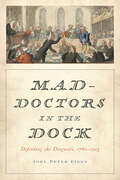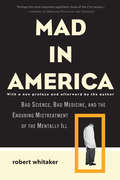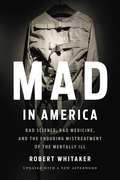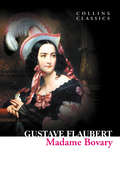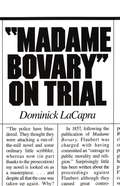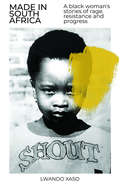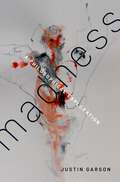- Table View
- List View
MacRoberts on Scottish Construction Contracts
by MacRobertsProvides a guide to the general principles of Scottish law relevant to construction contracts and the main provisions of the standard forms of construction contract used in Scotland including: the obligations of employers and contractors certification payment ending a construction contract remedies subcontracts collateral warranties insurance dispute resolution regulatory matters The new edition has been substantially updated and expanded to take account of the latest editions of the Scottish Standard Building Contracts and recent case law. Specific updates have been driven by the following changes to legislation and standard contracts Local Democracy Economic Development and Construction Act 2009 and the relative Scheme for Construction Contracts Arbitration (Scotland) Act 2010 Recognising the significant increase in use of NEC3 standard forms of contract, references to NEC3 provisions have been introduced throughout the relevant chapters so that each now covers the common law, the SBCC provisions and the NEC3 provisions. It also features new chapters on: litigation; competition; the Bribery Act 2010; and guarantees and bonds. From reviews of previous editions: ‘very approachable and readable… I would particularly recommend this book to non-legal construction professionals’ – Construction & Engineering Law ‘an informative textbook for the practitioner… [a] significant contribution to knowledge’ – Arbitration ‘a highly competent… textbook which would be of value for industry professionals with no legal background’ – Construction Law
MacRoberts on Scottish Construction Contracts
by MacRobertsProvides a guide to the general principles of Scottish law relevant to construction contracts and the main provisions of the standard forms of construction contract used in Scotland including: the obligations of employers and contractors certification payment ending a construction contract remedies subcontracts collateral warranties insurance dispute resolution regulatory matters The new edition has been substantially updated and expanded to take account of the latest editions of the Scottish Standard Building Contracts and recent case law. Specific updates have been driven by the following changes to legislation and standard contracts Local Democracy Economic Development and Construction Act 2009 and the relative Scheme for Construction Contracts Arbitration (Scotland) Act 2010 Recognising the significant increase in use of NEC3 standard forms of contract, references to NEC3 provisions have been introduced throughout the relevant chapters so that each now covers the common law, the SBCC provisions and the NEC3 provisions. It also features new chapters on: litigation; competition; the Bribery Act 2010; and guarantees and bonds. From reviews of previous editions: ‘very approachable and readable… I would particularly recommend this book to non-legal construction professionals’ – Construction & Engineering Law ‘an informative textbook for the practitioner… [a] significant contribution to knowledge’ – Arbitration ‘a highly competent… textbook which would be of value for industry professionals with no legal background’ – Construction Law
Macroprudential Banking Supervision & Monetary Policy: Legal Interaction in the European Union
by Luca AmorelloThe European experience suggests that the efforts made to achieve an efficient trade-off between monetary policy and prudential supervision ultimately failed. The severity of the global crisis have pushed central banks to explore innovative tools—within or beyond their statutory constraints—capable of restoring the smooth functioning of the financial cycle, including setting macroprudential policy instruments in the regulatory toolkit. But macroprudential and monetary policies, by sharing multiple transmission channels, may interact—and conflict—with each other. Such conflicts may represent not only an economic challenge in the pursuit of price and financial stability, but also a legal uncertainty characterizing the regulatory developments of the EU macroprudential and monetary frameworks. In analyzing the “legal interaction” between the two frameworks in the EU, this book seeks to provide evidence of the inconsistencies associated with the structural separation of macroprudential and monetary frameworks, shedding light upon the legal instruments that could reconcile any potential policy inconsistency.
Macroprudential Banking Supervision & Monetary Policy: Legal Interaction in the European Union
by Luca AmorelloThe European experience suggests that the efforts made to achieve an efficient trade-off between monetary policy and prudential supervision ultimately failed. The severity of the global crisis have pushed central banks to explore innovative tools—within or beyond their statutory constraints—capable of restoring the smooth functioning of the financial cycle, including setting macroprudential policy instruments in the regulatory toolkit. But macroprudential and monetary policies, by sharing multiple transmission channels, may interact—and conflict—with each other. Such conflicts may represent not only an economic challenge in the pursuit of price and financial stability, but also a legal uncertainty characterizing the regulatory developments of the EU macroprudential and monetary frameworks. In analyzing the “legal interaction” between the two frameworks in the EU, this book seeks to provide evidence of the inconsistencies associated with the structural separation of macroprudential and monetary frameworks, shedding light upon the legal instruments that could reconcile any potential policy inconsistency.
Mad-Doctors in the Dock: Defending the Diagnosis, 1760–1913
by Joel Peter EigenShortly before she pushed her infant daughter headfirst into a bucket of water and fastened the lid, Annie Cherry warmed the pail because, as she later explained to a police officer, "It would have been cruel to put her in cold water." Afterwards, this mother sat down and poured herself a cup of tea. At Cherry’s trial at the Old Bailey in 1877, Henry Charlton Bastian, physician to the National Hospital for the Paralyzed and Epileptic, focused his testimony on her preternatural calm following the drowning. Like many other late Victorian medical men, Bastian believed that the mother’s act and her subsequent behavior indicated homicidal mania, a novel species of madness that challenged the law’s criterion for assigning criminal culpability.How did Dr. Bastian and his cohort of London’s physicians, surgeons, and apothecariesâ€�originally known as "mad-doctors"â€�arrive at such an innovative diagnosis, and how did they defend it in court? Mad-Doctors in the Dock is a sophisticated exploration of the history of the insanity defense in the English courtroom from the middle of the eighteenth century to the early twentieth century. Joel Peter Eigen examines courtroom testimony offered in nearly 1,000 insanity trials, transporting us into the world of psychiatric diagnosis and criminal justice. The first comprehensive account of how medical insight and folk psychology met in the courtroom, this book makes clear the tragedy of the crimes, the spectacle of the trials, and the consequences of the diagnosis for the emerging field of forensic psychiatry.
Mad-Doctors in the Dock: Defending the Diagnosis, 1760–1913
by Joel Peter EigenShortly before she pushed her infant daughter headfirst into a bucket of water and fastened the lid, Annie Cherry warmed the pail because, as she later explained to a police officer, "It would have been cruel to put her in cold water." Afterwards, this mother sat down and poured herself a cup of tea. At Cherry’s trial at the Old Bailey in 1877, Henry Charlton Bastian, physician to the National Hospital for the Paralyzed and Epileptic, focused his testimony on her preternatural calm following the drowning. Like many other late Victorian medical men, Bastian believed that the mother’s act and her subsequent behavior indicated homicidal mania, a novel species of madness that challenged the law’s criterion for assigning criminal culpability.How did Dr. Bastian and his cohort of London’s physicians, surgeons, and apothecariesâ€�originally known as "mad-doctors"â€�arrive at such an innovative diagnosis, and how did they defend it in court? Mad-Doctors in the Dock is a sophisticated exploration of the history of the insanity defense in the English courtroom from the middle of the eighteenth century to the early twentieth century. Joel Peter Eigen examines courtroom testimony offered in nearly 1,000 insanity trials, transporting us into the world of psychiatric diagnosis and criminal justice. The first comprehensive account of how medical insight and folk psychology met in the courtroom, this book makes clear the tragedy of the crimes, the spectacle of the trials, and the consequences of the diagnosis for the emerging field of forensic psychiatry.
Mad in America: Bad Science, Bad Medicine, and the Enduring Mistreatment of the Mentally Ill
by Robert WhitakerSchizophrenics in the United States currently fare worse than patients in the world's poorest countries. In Mad in America, medical journalist Robert Whitaker argues that modern treatments for the severely mentally ill are just old medicine in new bottles, and that we as a society are deeply deluded about their efficacy. The widespread use of lobotomies in the 1920s and 1930s gave way in the 1950s to electroshock and a wave of new drugs. In what is perhaps Whitaker's most damning revelation, Mad in America examines how drug companies in the 1980s and 1990s skewed their studies to prove that new antipsychotic drugs were more effective than the old, while keeping patients in the dark about dangerous side effects.A haunting, deeply compassionate book-now revised with a new introduction-Mad in America raises important questions about our obligations to the mad, the meaning of "insanity,” and what we value most about the human mind.
Mad in America: Bad Science, Bad Medicine, and the Enduring Mistreatment of the Mentally Ill
by Robert WhitakerAn updated edition of the classic history of schizophrenia in America, which gives voice to generations of patients who suffered through "cures" that only deepened their suffering and impaired their hope of recoverySchizophrenics in the United States currently fare worse than patients in the world's poorest countries. In Mad in America, medical journalist Robert Whitaker argues that modern treatments for the severely mentally ill are just old medicine in new bottles, and that we as a society are deeply deluded about their efficacy.The widespread use of lobotomies in the 1920s and 1930s gave way in the 1950s to electroshock and a wave of new drugs. In what is perhaps Whitaker's most damning revelation, Mad in America examines how drug companies in the 1980s and 1990s skewed their studies to prove that new antipsychotic drugs were more effective than the old, while keeping patients in the dark about dangerous side effects.A haunting, deeply compassionate book -- updated with a new introduction and prologue bringing in the latest medical treatments and trends -- Mad in America raises important questions about our obligations to the mad, the meaning of "insanity," and what we value most about the human mind.
Mad in America: Bad Science, Bad Medicine, and the Enduring Mistreatment of the Mentally Ill
by Robert WhitakerIn Mad in America, medical journalist Robert Whitaker reveals an astounding truth: Schizophrenics in the United States fare worse than those in poor countries, and quite possibly worse than asylum patients did in the early nineteenth century. Indeed, Whitaker argues, modern treatments for the severely mentally ill are just old medicine in new bottles and we as a society are deluded about their efficacy. Tracing over three centuries of "cures" for madness, Whitaker shows how medical therapies-from "spinning" or "chilling" patients in colonial times to more modern methods of electroshock, lobotomy, and drugs-have been used to silence patients and dull their minds, deepening their suffering and impairing their hope of recovery. Based on exhaustive research culled from old patient medical records, historical accounts, and government documents, this haunting book raises important questions about our obligations to the mad, what it means to be "insane," and what we value most about the human mind.
Madame Bovary: A Play In Three Acts (Collins Classics)
by Gustave FlaubertHarperCollins is proud to present its new range of best-loved, essential classics.
Madame Bovary on Trial
by Dominick LaCapraIn 1857, following the publication of Madame Bovary, Flaubert was charged with having committed an "outrage to public morality and religion." Dominick LaCapra, an intellectual historian with wide-ranging literary interests, here examines this remarkable trial. LaCapra draws on material from Flaubert’s correspondence, the work of literary critics, and Jean-Paul Sartre’s analysis of Flaubert. LaCapra maintains that Madame Bovary is at the intersection of the traditional and the modern novel, simultaneously invoking conventional expectations and subverting them.
Made in South Africa: A Black Woman’s Stories of Rage, Resistance and Progress
by Lwando XasoLike so many of her generation, Lwando Xaso came of age alongside the beginnings and growth of South Africa’s constitutional democracy. Her journey into adulthood was a radically different one from that of earlier generations, marked by hope that changing perceptions would usher in a new and free society.Made in South Africa – A Black Woman’s Stories of Rage, Resistance and Progress, is a vibrant collection of essays in which Lwando examines with incisive clarity some of the events that have shaped her experience of South Africa – a country with huge potential but weighed down by persistent racism and inequality, cultural appropriation, sexism and corruption, all legacies of a complicated history.As a young lawyer intent on climbing the corporate ladder, Lwando’s life’s direction was changed by a personal experience of the oppressive capacity of a supposedly democratic government when it unjustly fired a close family friend and mentor from a senior government position. She found herself on his legal team and the turmoil the case created within her led her to further her studies in constitutional law, and to pick up her pen and share with a wider audience her views of what was happening in her beloved country.Her outlook was further shaped by her experience of clerking at the Constitutional Court for Justice Edwin Cameron, which deepened her respect for the South African Constitution, and what it really means for a resilient people to strive continually to live up to its moral and legal standards.Lwando’s writing reflects her unflinching resolve to live according to the precepts of our groundbreaking Constitution and offers a challenge to all South Africans to believe in and achieve ‘the improbable’.
Made Only in India: Goods with Geographical Indications
by Anu KapurWhat makes Darjeeling tea, Pashmina shawl, Monsooned Malabar Arabica coffee and Chanderi saree special? Why is it that some goods derive their uniqueness through their inherent linkage to a place? In a pioneering study, this book explores this intriguing question in the Indian context across 199 registered goods with geographical indications, linked with their place of origin. It argues that the origin of these goods is attributed to a distinctive ecology that brews in a particular place. The attributes of their origin further endorse their unique geographical indications through legal channels. Drawing from a variety of disciplines including geography, history, sociology, handicrafts, paintings, and textiles, the author also examines the Geographical Indications Act of 1999, and shows how it has created a scope to identify, register and protect those goods, be they natural, agricultural, or manufactured. The work presents a new perspective on the indigenous diversities and offers an original understanding of the geography and history of India. Lucid and accessible, with several illustrative maps, this book will be useful to scholars and researchers in the social sciences, environmental studies, development studies, law, trade and history.
Made Only in India: Goods with Geographical Indications
by Anu KapurWhat makes Darjeeling tea, Pashmina shawl, Monsooned Malabar Arabica coffee and Chanderi saree special? Why is it that some goods derive their uniqueness through their inherent linkage to a place? In a pioneering study, this book explores this intriguing question in the Indian context across 199 registered goods with geographical indications, linked with their place of origin. It argues that the origin of these goods is attributed to a distinctive ecology that brews in a particular place. The attributes of their origin further endorse their unique geographical indications through legal channels. Drawing from a variety of disciplines including geography, history, sociology, handicrafts, paintings, and textiles, the author also examines the Geographical Indications Act of 1999, and shows how it has created a scope to identify, register and protect those goods, be they natural, agricultural, or manufactured. The work presents a new perspective on the indigenous diversities and offers an original understanding of the geography and history of India. Lucid and accessible, with several illustrative maps, this book will be useful to scholars and researchers in the social sciences, environmental studies, development studies, law, trade and history.
Madeleine's Children: Family, Freedom, Secrets, and Lies in France's Indian Ocean Colonies
by Sue PeabodyMadeleine's Children uncovers a multigenerational saga of an enslaved family in India and two islands, Réunion and Mauritius, in the eastern empires of France and Britain during the eighteenth and nineteenth centuries. A tale of legal intrigue, it reveals the lives and secret relationships between slaves and free people that have remained obscure for two centuries. As a child, Madeleine was pawned by her impoverished family and became the slave of a French woman in Bengal. She accompanied her mistress to France as a teenager, but she did not challenge her enslavement there on the basis of France's Free Soil principle, a consideration that did not come to light until future lawyers investigated her story. In France, a new master and mistress purchased her, despite laws prohibiting the sale of slaves within the kingdom. The couple transported Madeleine across the ocean to their plantation in the Indian Ocean colonies, where she eventually gave birth to three children: Maurice, Constance, and Furcy. One died a slave and two eventually became free, but under very different circumstances. On 21 November 1817, Furcy exited the gates of his master's mansion and declared himself a free man. The lawsuit waged by Furcy to challenge his wrongful enslavement ultimately brought him before the Royal Court of Paris, despite the extreme measures that his putative master, Joseph Lory, deployed to retain him as his slave. A meticulous work of archival detection, Madeleine's Children investigates the cunning, clandestine, and brutal strategies that masters devised to keep slaves under their control-and paints a vivid picture of the unique and evolving meanings of slavery and freedom in the Indian Ocean world.
Madeleine's Children: Family, Freedom, Secrets, and Lies in France's Indian Ocean Colonies
by Sue PeabodyMadeleine's Children uncovers a multigenerational saga of an enslaved family in India and two islands, Réunion and Mauritius, in the eastern empires of France and Britain during the eighteenth and nineteenth centuries. A tale of legal intrigue, it reveals the lives and secret relationships between slaves and free people that have remained obscure for two centuries. As a child, Madeleine was pawned by her impoverished family and became the slave of a French woman in Bengal. She accompanied her mistress to France as a teenager, but she did not challenge her enslavement there on the basis of France's Free Soil principle, a consideration that did not come to light until future lawyers investigated her story. In France, a new master and mistress purchased her, despite laws prohibiting the sale of slaves within the kingdom. The couple transported Madeleine across the ocean to their plantation in the Indian Ocean colonies, where she eventually gave birth to three children: Maurice, Constance, and Furcy. One died a slave and two eventually became free, but under very different circumstances. On 21 November 1817, Furcy exited the gates of his master's mansion and declared himself a free man. The lawsuit waged by Furcy to challenge his wrongful enslavement ultimately brought him before the Royal Court of Paris, despite the extreme measures that his putative master, Joseph Lory, deployed to retain him as his slave. A meticulous work of archival detection, Madeleine's Children investigates the cunning, clandestine, and brutal strategies that masters devised to keep slaves under their control-and paints a vivid picture of the unique and evolving meanings of slavery and freedom in the Indian Ocean world.
Madhukar Hiregange's A Practical Guide to GST Audits and Certification (5th edition)
by CA Madhukar Hiregange CA Ravi Somani Shri B.S.V. Murthy CA Mahadev. RThe fifth edition of this book has been written with a perspective to enable the taxpayers to ensure compliance with the applicable provisions of GST related to filing of annual returns and self-certified Form GSTR-9C. The vast experience of the four authors totaling about one hundred years in consulting, adjudicating, judging and implementation of indirect taxes would immensely help the professionals implement GST provisions and conduct of audit in an easier way while providing value to their clients/employers.The book is divided into 6 parts as follows:Part 1 – Overview of GST law and insights on good accounting practices, record maintenance and documentation to facilitate returns filing, reconciliation and professional opportunities from the perspective of GST Audit.Part 2 – Background of the Annual returns, role of professionals and a detailed clause by clause analysis with Practical FAQ's for filing the Annual Returns in Form GSTR 9. Part 3 - Background of the GST Audit, role of professionals and a detailed clause by clause analysis with practical FAQ's for filing the Reconciliation statement in Form GSTR 9C. Part 4 – Checklists, formats, ICQ's, templates and practical methodology of conducting GST Audit [verification of documents/transactions after evaluation of internal control, reconciliations with tips to mitigate demand, common errors to avoid.Part 5 – Customs Audit, year-end action points for taxpayers, other GST certifications and Departmental Audit and some useful decisions. Part 6 - Appendices containing the gist of important notifications, guidance notes, standards, forms of audit under GST, and important templates for ready reference of professionals.KEY FEATURESIncludes practical tables giving Step by Step approach with internal control questionnaires, checklists, templates, Good accounting practices, review program and reconciliation statements for:–Filing annual return with checklist and enabling formats–Audit certificationDetailed analysis of reporting comments, remarks and qualifications in Part B of GSTR 9C along with exhaustive list of sample observations, remarks to be reported which would be relevant till FY 2019-20Detailed discussion on various other key reconciliations including ITC, outward supplies, etc.Extensive list of common errors to be avoided in GST while doing preparation for audit.Coverage of key reconciliations viz., GSTR 2A to 3B, GSTR 1 to 3B, etc.Extensive discussion on professional approach to GST audit using the internal control questionnaire and sample audit program for enabling taxpayers in filing GSTR 9C form.Insights on key year-end activities & relationship between GSTR 1, GSTR 3B & GSTR 9.Covering important tools/techniques for optimization of tax, ITC, year-end actions, and some decisions in favour of taxpayers to avoid future disputes and adding value.Visit http://bit.ly/GSTAudit for updates and information.
Madison’s Hand: Revising The Constitutional Convention
by Mary Sarah BilderNo document depicts the Constitutional Convention’s charismatic figures, crushing disappointments, and miraculous triumphs with the force of Madison’s Notes. But how reliable is this account? Drawing on digital technologies and textual analysis, Mary Sarah Bilder reveals that Madison revised to a far greater extent than previously recognized.
Madison's Nightmare: How Executive Power Threatens American Democracy
by Peter M. ShaneThe George W. Bush administration’s ambitious—even breathtaking—claims of unilateral executive authority raised deep concerns among constitutional scholars, civil libertarians, and ordinary citizens alike. But Bush’s attempts to assert his power are only the culmination of a near-thirty-year assault on the basic checks and balances of the U.S. government—a battle waged by presidents of both parties, and one that, as Peter M. Shane warns in Madison’s Nightmare, threatens to utterly subvert the founders’ vision of representative government. Tracing this tendency back to the first Reagan administration, Shane shows how this era of "aggressive presidentialism" has seen presidents exerting ever more control over nearly every arena of policy, from military affairs and national security to domestic programs. Driven by political ambition and a growing culture of entitlement in the executive branch—and abetted by a complaisant Congress, riven by partisanship—this presidential aggrandizement has too often undermined wise policy making and led to shallow, ideological, and sometimes outright lawless decisions. The solution, Shane argues, will require a multipronged program of reform, including both specific changes in government practice and broader institutional changes aimed at supporting a renewed culture of government accountability. From the war on science to the mismanaged war on terror, Madison’s Nightmare outlines the disastrous consequences of the unchecked executive—and issues a stern wake-up call to all who care about the fate of our long democratic experiment.
Madison's Nightmare: How Executive Power Threatens American Democracy
by Peter M. ShaneThe George W. Bush administration’s ambitious—even breathtaking—claims of unilateral executive authority raised deep concerns among constitutional scholars, civil libertarians, and ordinary citizens alike. But Bush’s attempts to assert his power are only the culmination of a near-thirty-year assault on the basic checks and balances of the U.S. government—a battle waged by presidents of both parties, and one that, as Peter M. Shane warns in Madison’s Nightmare, threatens to utterly subvert the founders’ vision of representative government. Tracing this tendency back to the first Reagan administration, Shane shows how this era of "aggressive presidentialism" has seen presidents exerting ever more control over nearly every arena of policy, from military affairs and national security to domestic programs. Driven by political ambition and a growing culture of entitlement in the executive branch—and abetted by a complaisant Congress, riven by partisanship—this presidential aggrandizement has too often undermined wise policy making and led to shallow, ideological, and sometimes outright lawless decisions. The solution, Shane argues, will require a multipronged program of reform, including both specific changes in government practice and broader institutional changes aimed at supporting a renewed culture of government accountability. From the war on science to the mismanaged war on terror, Madison’s Nightmare outlines the disastrous consequences of the unchecked executive—and issues a stern wake-up call to all who care about the fate of our long democratic experiment.
Madison's Nightmare: How Executive Power Threatens American Democracy
by Peter M. ShaneThe George W. Bush administration’s ambitious—even breathtaking—claims of unilateral executive authority raised deep concerns among constitutional scholars, civil libertarians, and ordinary citizens alike. But Bush’s attempts to assert his power are only the culmination of a near-thirty-year assault on the basic checks and balances of the U.S. government—a battle waged by presidents of both parties, and one that, as Peter M. Shane warns in Madison’s Nightmare, threatens to utterly subvert the founders’ vision of representative government. Tracing this tendency back to the first Reagan administration, Shane shows how this era of "aggressive presidentialism" has seen presidents exerting ever more control over nearly every arena of policy, from military affairs and national security to domestic programs. Driven by political ambition and a growing culture of entitlement in the executive branch—and abetted by a complaisant Congress, riven by partisanship—this presidential aggrandizement has too often undermined wise policy making and led to shallow, ideological, and sometimes outright lawless decisions. The solution, Shane argues, will require a multipronged program of reform, including both specific changes in government practice and broader institutional changes aimed at supporting a renewed culture of government accountability. From the war on science to the mismanaged war on terror, Madison’s Nightmare outlines the disastrous consequences of the unchecked executive—and issues a stern wake-up call to all who care about the fate of our long democratic experiment.
Madness: A Philosophical Exploration
by Justin GarsonSince the time of Hippocrates, madness has typically been viewed through the lens of disease, dysfunction, and defect. Madness, like all other disease, happens when something in the mind, or in the brain, does not operate the way that it should or as nature intended. In this paradigm, the role of the healer is simply to find the dysfunction and fix it. This remains the dominant perspective in global psychiatry today. In Madness: A Philosophical Exploration, philosopher of science Justin Garson presents a radically different paradigm for conceiving of madness and the forms that it takes. In this paradigm, which he calls madness-as-strategy, madness is neither a disease nor a defect, but a designed feature, like the heart or lungs. That is to say, at least sometimes, when someone is mad, everything inside of them is working exactly as it should and as nature intended. Through rigorous engagement with texts spanning the classical era to Darwinian medicine, Garson shows that madness-as-strategy is not a new conception. Thus, more than a history of science or a conceptual genealogy, Madness is a recovery mission. In recovering madness-as-strategy, it leads us beyond today's dominant medical paradigm toward a very different form of thinking and practice. This book is essential reading for philosophers of medicine and psychiatry, particularly for those who seek to understand the nature of health, disease, and mental disorder. It will also be a valuable resource for historians and sociologists of medicine for its innovative approach to the history of madness. Most importantly, it will be useful for mental health service users, survivors, and activists, who seek an alternative and liberating vision of what it means to be mad.
Madness: A Philosophical Exploration
by Justin GarsonSince the time of Hippocrates, madness has typically been viewed through the lens of disease, dysfunction, and defect. Madness, like all other disease, happens when something in the mind, or in the brain, does not operate the way that it should or as nature intended. In this paradigm, the role of the healer is simply to find the dysfunction and fix it. This remains the dominant perspective in global psychiatry today. In Madness: A Philosophical Exploration, philosopher of science Justin Garson presents a radically different paradigm for conceiving of madness and the forms that it takes. In this paradigm, which he calls madness-as-strategy, madness is neither a disease nor a defect, but a designed feature, like the heart or lungs. That is to say, at least sometimes, when someone is mad, everything inside of them is working exactly as it should and as nature intended. Through rigorous engagement with texts spanning the classical era to Darwinian medicine, Garson shows that madness-as-strategy is not a new conception. Thus, more than a history of science or a conceptual genealogy, Madness is a recovery mission. In recovering madness-as-strategy, it leads us beyond today's dominant medical paradigm toward a very different form of thinking and practice. This book is essential reading for philosophers of medicine and psychiatry, particularly for those who seek to understand the nature of health, disease, and mental disorder. It will also be a valuable resource for historians and sociologists of medicine for its innovative approach to the history of madness. Most importantly, it will be useful for mental health service users, survivors, and activists, who seek an alternative and liberating vision of what it means to be mad.
The Madness of Crowds: Gender, Race and Identity
by Douglas MurrayIn his devastating new book The Madness of Crowds, Douglas Murray examines the twenty-first century's most divisive issues: sexuality, gender, technology and race. He reveals the astonishing new culture wars playing out in our workplaces, universities, schools and homes in the names of social justice, identity politics and 'intersectionality'.We are living through a postmodern era in which the grand narratives of religion and political ideology have collapsed. In their place have emerged a crusading desire to right perceived wrongs and a weaponization of identity, both accelerated by the new forms of social and news media. Narrow sets of interests now dominate the agenda as society becomes more and more tribal – and, as Murray shows, the casualties are mounting. Readers of all political persuasions cannot afford to ignore Murray's masterfully argued and fiercely provocative book, in which he seeks to inject some sense into the discussion around this generation's most complicated issues. He ends with an impassioned call for free speech, shared common values and sanity in an age of mass hysteria.
The Madness of Crowds: Gender, Race and Identity
by Douglas MurrayIn his devastating new book The Madness of Crowds, Douglas Murray examines the twenty-first century's most divisive issues: sexuality, gender, technology and race. He reveals the astonishing new culture wars playing out in our workplaces, universities, schools and homes in the names of social justice, identity politics and 'intersectionality'.We are living through a postmodern era in which the grand narratives of religion and political ideology have collapsed. In their place have emerged a crusading desire to right perceived wrongs and a weaponization of identity, both accelerated by the new forms of social and news media. Narrow sets of interests now dominate the agenda as society becomes more and more tribal – and, as Murray shows, the casualties are mounting. Readers of all political persuasions cannot afford to ignore Murray's masterfully argued and fiercely provocative book, in which he seeks to inject some sense into the discussion around this generation's most complicated issues. He ends with an impassioned call for free speech, shared common values and sanity in an age of mass hysteria.


